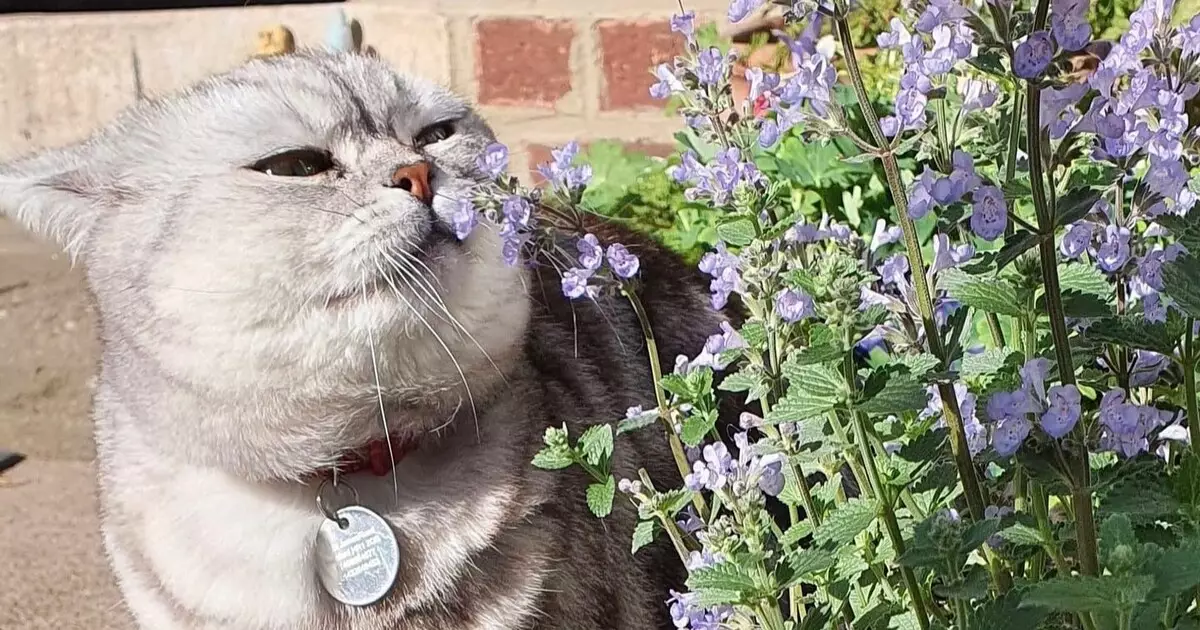Catnip, scientifically known as Nepeta cataria, is a common herb that holds a unique fascination for many domestic cats. While some felines display mild curiosity, others exhibit intense reactions, rolling and writhing in euphoric delight. This engaging behavior is not just a whimsical quirk; it has deeper biological roots that intrigue pet owners and scientists alike.
Hailing from the mint family, catnip contains compounds that activate a cat’s sensory receptors, leading to a state that many describe as a high. However, what’s particularly captivating is that this euphoric state has a scientific basis. When cats interact with catnip, whether by chewing or scratching, they release aromatic oils and compounds, creating an intoxicating atmosphere that entices them to indulge further.
What truly explains the carefree antics of cats in the presence of catnip? At the heart of this phenomenon are iridoids, specifically nepetalactone, and nepetalactol, found in the plant’s leaves. These molecules not only trigger the mental stimulation that brings about playful behavior but also play a crucial role in the plant’s natural defense mechanism. When catnip leaves are damaged, their chemical production significantly increases, aiding in pest-repelling properties, which might be nature’s way of keeping cats safe from bothersome insects like mosquitoes.
Interestingly, cats aren’t the only creatures drawn to these compounds. Some other plants, such as valerian and silver vine, can induce similar reactions in felines. This overlapping interest raises questions about the evolutionary advantages of these substances. Just as cats seem to revel in their heightened states, the evolutionary benefits of plants producing these chemicals might stem from their ability to draw in and protect feline populations.
Catnip’s utility extends beyond providing recreational stimulation to house cats. Throughout history, humans have harnessed various plants for their pest-repelling properties. For generations, chrysanthemum extracts have been utilized in natural pest control, echoing the ancient wisdom of turning to nature for solutions. Birds and other animals employ similar tactics, using citrus peels and other flora as natural insect deterrents. Remarkably, some primates even use millipedes as a means of parasite control. However, the combination of physiological bliss and insect repulsion seems to be a particularly rare gift afforded to our feline friends.
As a hardy perennial, catnip thrives in various environments, making it an easy plant to grow in gardens, patios or even indoors. Though not renowned for its visual appeal, which features small white flowers with light purple spots, its resilience allows it to flourish in numerous settings.
Moreover, catnip is not limited to feline enjoyment. Dogs and a variety of other pets can also benefit from this aromatic herb in moderation, contributing to an enriched dietary experience. Beyond practical applications, catnip’s ecological role can’t be overlooked—its flowers attract beneficial insects like bees and butterflies, contributing to overall biodiversity.
Catnip represents a delightful intersection of nature, biology, and pleasure. Its ability to engage cats while simultaneously serving as an insect repellent speaks to the remarkable adaptations found in the natural world. As we continue to study and appreciate this unique herb, its allure for cats offers a charming reminder of the intricate relationships between species and their environments. Whether through playful antics or ecological benefits, catnip continues to play a pivotal role in the lives of both cats and their human companions.


Leave a Reply